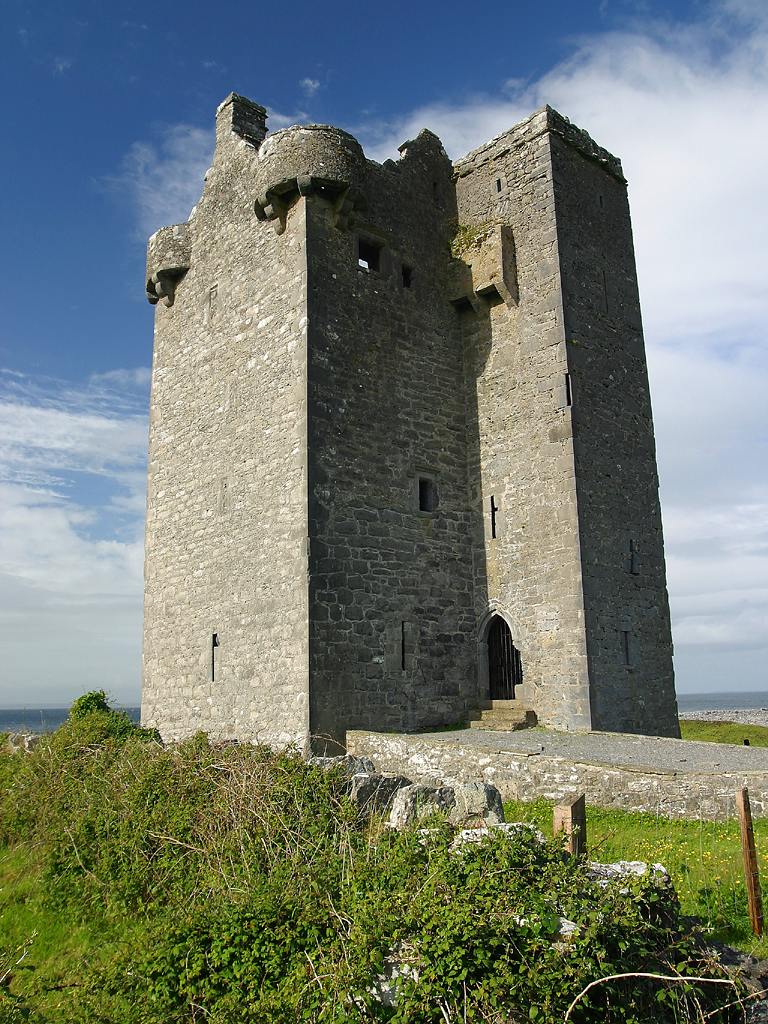L-plan on:
[Wikipedia]
[Google]
[Amazon]
 An L-plan castle is a castle or
An L-plan castle is a castle or
 An L-plan castle is a castle or
An L-plan castle is a castle or tower house
A tower house is a particular type of stone structure, built for defensive purposes as well as habitation. Tower houses began to appear in the Middle Ages, especially in mountainous or limited access areas, in order to command and defend strateg ...
in the shape of an L, typically built from the 13th to the 17th century. This design is found quite frequently in Scotland, but is also seen in England, Ireland, Romania, Sardinia, and other locations. The evolution of its design was an expansion of the blockhouse or simple square tower from the Early Middle Ages
In the history of Europe, the Middle Ages or medieval period lasted approximately from the late 5th to the late 15th centuries, similar to the post-classical period of global history. It began with the fall of the Western Roman Empire ...
. As building techniques improved, it became possible to construct a larger building footprint and a more complex shape than the simple blockhouse tower. A more compelling motivation for the L plan was the ability to defend the entrance door by providing covering fire from the adjacent walls. This stratagem was particularly driven by the advent of cannon used by attackers.
It was common for the union of the two wings to have very thick wall construction to support a major defensive tower in the union area. For example, the stone walls of Muchalls Castle
Muchalls Castle stands overlooking the North Sea in the countryside of Kincardine and Mearns, Aberdeenshire, Scotland. The lower course is a well-preserved Romanesque, double-groined 13th-century tower house structure, built by the Frasers of ...
in Scotland are over 14 feet thick at the ground level. Built in the 13th century, these walls are thought to have supported a substantial defensive tower. A 17th-century reconstruction consisted of a probably equally tall structure, but one suited toward 17th century living and whose upper storey footprints mimicked the lower course.
Other examples of Scottish L-plan castles are Culzean Castle
Culzean Castle ( , see yogh; sco, Cullain) is a castle overlooking the Firth of Clyde, near Maybole, Carrick, in South Ayrshire, on the west coast of Scotland. It is the former home of the Marquess of Ailsa, the chief of Clan Kennedy, but is ...
built in the late 16th century in Ayrshire; Dalhousie Castle
Dalhousie Castle is a castle in Cockpen, Midlothian, Scotland. Dalhousie Castle is situated near the town of Bonnyrigg, 8 miles (13 km) south of Edinburgh. The castle was the seat of the Earls of Dalhousie, the chieftains of Clan Ramsay.
H ...
built as a 15th-century towerhouse near Dalkeith in the Lothian region; Dunnottar Castle
Dunnottar Castle ( gd, Dùn Fhoithear, "fort on the shelving slope") is a ruined medieval fortress located upon a rocky headland on the north-eastern coast of Scotland, about south of Stonehaven. The surviving buildings are largely of the ...
a partially ruined castle perched on a cliff by the North Sea near Stonehaven; Erchless Castle
Erchless Castle is an L-plan castle in northern Scotland, near Struy, Highland. The current building was built in about 1600.Fernie Castle constructed in the 16th century in Fife; and
Neidpath Castle
Neidpath Castle is an L-plan rubble-built tower house, overlooking the River Tweed about west of Peebles in the Borders of Scotland. The castle is both a wedding venue and filming location and can be viewed by appointment.
History
An early cast ...
built by Clan Fraser
Clan Fraser is a Scottish clan of the Scottish Lowlands.Way, George and Squire, Romily. ''Collins Scottish Clan & Family Encyclopedia''. (Foreword by The Rt Hon. The Earl of Elgin KT, Convenor, The Standing Council of Scottish Chiefs). Publish ...
in the 13th century near Peebles.
In Cagliari, Sardinia are two surviving structures known as the Torre dell'Elefante and Torre di San Pancrazio. Each of these towers, as well as a third structure destroyed by English and Spanish naval power, is an L-plan design. The structures date from the year 1300 and are each 30 metres in height. The towers served as important lookouts over the sea and toward the island interior.
See also
* Z-plan castleReferences
* Tranter, Nigel, '' The History of the Fortified House in Scotland'', Six Volumes, Oliver and Boyd, (1962 to 1971) *''The Castles of Scotland'', Martin Coventry, 2nd edition (1997),External links
{{Fortifications Late Middle Ages Castles by type Early Modern period